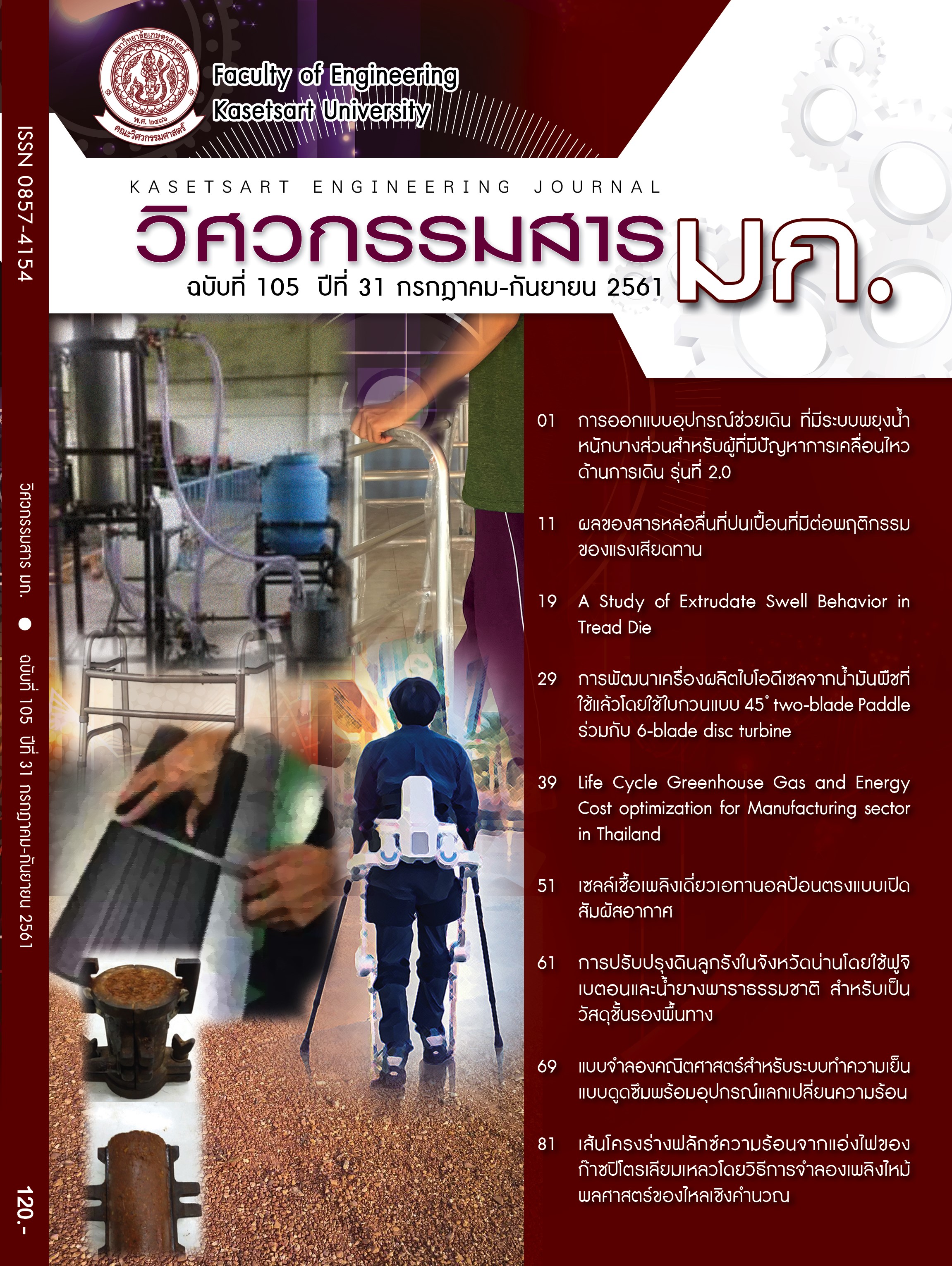The Effects of Lubricant Contamination on Friction Characteristics
Keywords:
lubricant, contamination, friction coefficientAbstract
This paper, the friction behavior of contaminated lubricants at different loads and different
contaminant concentrationshasbeenstudied. The experimental equipment wasdesignedtohave
two sets of the steel wheel of 5.2 cm in diameter. The first wheel was rotated at a constant speed
of about 1,450 RPM. The angular velocity of the other wheel couldbe adjustedfor testingthe slide
to roll ratio (SRR) at 0, 0.5, 1.0, and 1.5. Both wheels were set up to be parallel and contacted
together under an applied load. The applied load was varied to be 3 kgf, 5 kgf, 7 kgf, and 9 kgf.
Thus, the friction of the lubricant film at the junction zone of both wheels can be evaluated. The
six samples (engine oil + water, engine oil + diesel fuel, engine oil + carbon, engine oil + metals
(Fe), engine oil and engine oil used) were provided for testing. The experimental results showed
that the lubricant contaminated with water was influent to the viscosity property and the friction
coefficient more than other factors. Furthermore, it is found that the friction coefficient is smallest
in the case of the pure rolling contact (SRR=0) and then it is dramatically increased when the
SRR is increased.

